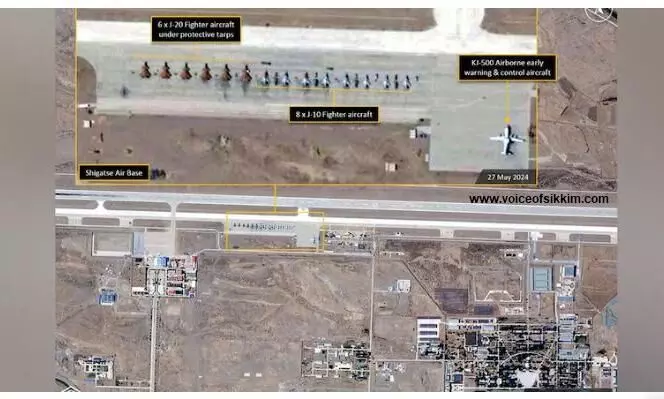
Source: X
Sikkim , May 31: A national media reported on Thursday that China has positioned its highly advanced J-20 stealth fighter jets at a location less than 150 kilometres from the Indian border in Sikkim. This military movement was identified through satellite images captured on May 27, which revealed the presence of six J-20 jets at the Shigatse Peace Airport, a facility serving both military and civilian purposes.
According to reports, the Indian Air Force (IAF) is aware of the deployment of the Chinese fighter jets but has refrained from making any official statements regarding the situation. The J-20, a fifth-generation stealth fighter, has been in service with the Chinese Air Force since 2017 and is equipped with cutting-edge technologies. Notably, the aircraft can carry advanced air-to-air missiles, including the PL-15, which has a striking range of up to 300 kilometres.
This latest deployment has raised concerns, given the strategic and tactical implications of having such advanced fighter jets so close to the Indian border.
In response to China's growing military presence, India has been strengthening its own air capabilities. The Indian Air Force currently operates a fleet of 36 French-made Rafale fighter jets, which are renowned for their versatility and advanced combat capabilities. Eight of these Rafale jets are currently in Alaska, participating in high-tech combat exercises with the U.S. Air Force (USAF), honing their skills and improving interoperability with allied forces. The remainder of India's Rafale fleet is stationed strategically, with the second squadron of 16 Rafale jets based at Hasimara in West Bengal, less than 290 kilometres from Shigatse.
Historically, China has deployed J-20 fighter jets in Tibet and Xinjiang’s Hotan province, with sightings reported between 2020 and 2023. However, this marks the largest concentration of J-20s near the Sikkim border to date. Such deployments highlight China's strategic intentions in the region and its commitment to maintaining a robust military presence along its borders.
This situation underscores the ongoing strategic competition and heightened military vigilance between China and India. As both nations continue to upgrade their military assets and refine their operational strategies, the regional security dynamics are likely to remain tense.
